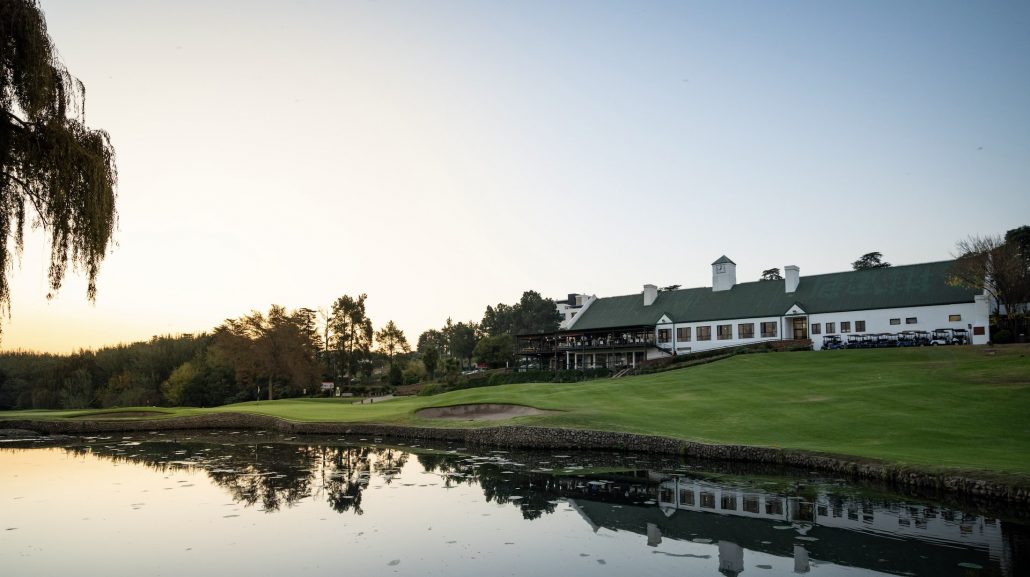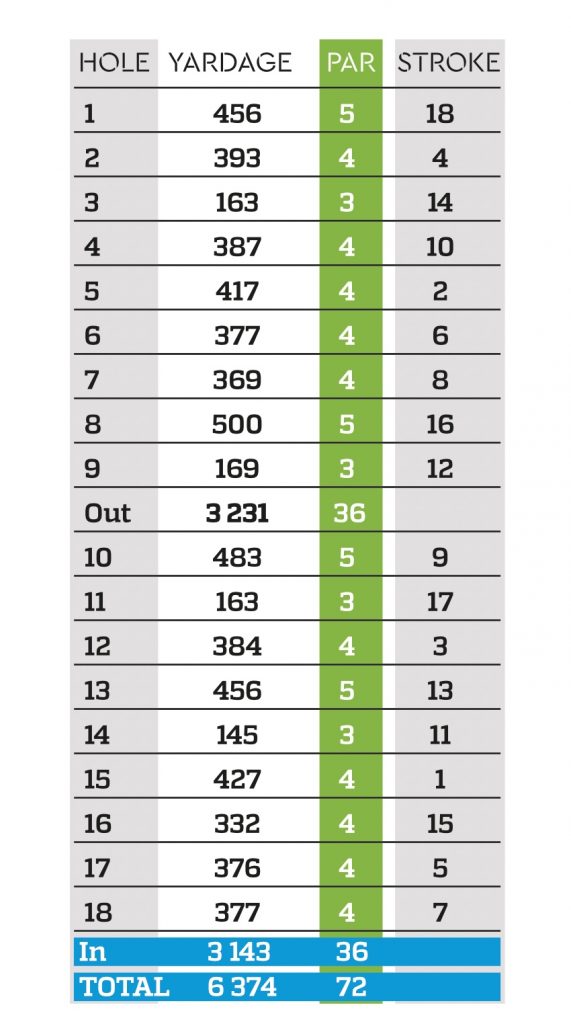Centrally located in Gauteng, Modderfontein Golf Club’s success is endorsed by its rankings as well as high rounds year on year, writes MARK SAMPSON.
Formerly known as the Modderfontein Dynamite Factory Club, it is located a few minutes off the highway in Edenvale, on the East Rand of Johannesburg. In the gold mining boom in the early 1900s, dynamite was primarily used to extract the gold-bearing rock. The area where the golf course can be found was the largest dynamite-producing factory, hence the original name of Dynamite Factory Club.
The name Modderfontein comes from the river that runs through the area, which directly translated means ‘mud spring’. The course itself dates back to the mid-1930s and was opened by Bobby Locke upon completion by designer Arthur Tomsett. As with many courses of its age, several changes have been made to the layout through the years.
The flowing parkland layout is located on a strongly undulating piece of land, resulting in many of the holes’ change in elevation. Through the years, the greens have gained a bit of a reputation for being somewhat firm but very true. With the age of the layout you can expect large mature trees hugging the fairway necessitating accuracy off the tees.
Several holding dams are fed by rivers running through the course, therefore numerous water hazards and ample bunkering demand accuracy throughout the round. The final arrow in its quiver is the continual change in altitude from tee to green. Double-checking yardages and factoring in the change in elevation are very much part of golfing at Modderfontein.
This mature parkland layout starts with a welcoming stroke-18 par five of 456m. Water down the right cuts across the fairway some 100m from the green so be sure to calculate your yardage correctly if laying up. For the longer hitters, be sure to favour the left side of the fairway as the hole doglegs from left to right. Greenside, you can expect a large green protected by two bunkers front right.
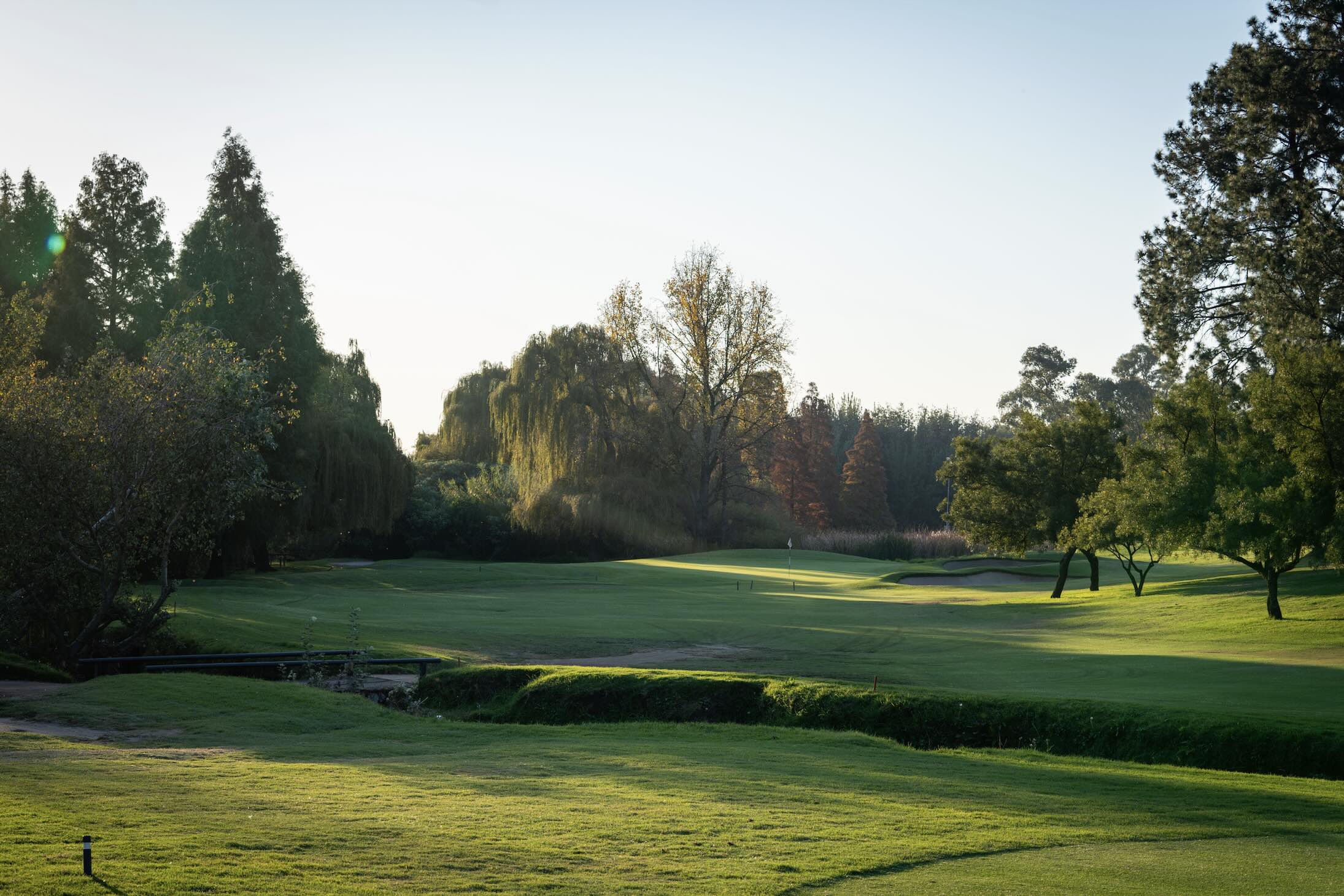
Turning back on yourself, an uphill par four of 393m is next. Bending from right to left, the main danger on this hole is water on the left of the green. The length and water are the main protagonists for the stroke-four rating.
The backbone of the front nine comes in the form of three consecutive par fours with a stroke rating of two, six and eight consecutively.
The 5th is a long par four of 417m with large mature trees on either side of a strongly sloping narrow fairway – the stroke-two rating very much alluding to how difficult it is to find the fairway from the tee. Greenside bunkers on either side need to be negotiated with a long-iron in hand. Once again turning back on your routing, an uphill 377m par four awaits. A strong left-to-right dogleg needs to be negotiated before going for the large bean- shaped green with one bunker short left.
Much of the same can be expected from the 7th hole as it moves up to the highest part of the course. A total of 369m needs negotiating on this stroke eight. The landing zone from the tee is squeezed on either side by bunkers. Remember to consider the uphill lie of the land when doing your club selection. Three bunkers, one left and two right, protect the green.
Respite on the two closing holes comes in the form of a 500m par five and closing par three. Although the 8th hole is long at 500m it slopes strongly downhill and with the ball flying further in the thin Highveld air it is a genuine birdie opportunity for the stronger players. The hole is straight, with the only real danger in the form of two bunkers short right of the green. The two-tiered green is narrow on the bottom half, making for a tough target with a longer club in hand. Going over the back of this raised green will leave a very difficult up-and-down.
The final hole on the front nine is a downhill par three with water right and a large bunker left. At 169m, a mid-iron should do for most. Favouring the left side of the green is the prudent play to avoid the water right.
Modderfontein has a large double-storey clubhouse, which was given a facelift in 1997. The bottom part houses the well-equipped pro shop and halfway house. The larger upstairs section offers a large conference and function area for up to 160 guests. The rest of the area houses the admin offices and change rooms. Finally, a large dining and bar area can be found overlooking the 18th green and the rest of the course. It’s very much the focal point of the club and always a hive of activity.
The back nine is arguably the more aesthetically pleasing of the two nines. Redesigned in 1990 by well-known South African golfer and member Hugh Baiochhi, it has several water features created specifically to allow for a constant water supply to the course.
Born in 1946, Baiocchi turned pro in 1971 and played most of his career on the European Tour. He then moved on to the Champions Tour at the age of 50. Through his career he had 24 professional wins, which included three on the senior Tour. His experience and knowledge of golf course architecture is plain to see when moving on to the back nine at Modderfontein Golf Club. He also designed the well-known Legend course in Mauritius on the Constance hotels and resorts property which hosts the final event of the year on the Legends Tour.
The nine starts with a strong par five of 483m. Playing uphill, two fairway bunkers left await a pulled drive, while finding the fairway does allow the stronger players to reach the green in two. That said, the green is tucked away by a number of trees making it difficult to find it in two. Sloping from back to front, the green has bunkers front left and middle right. The stroke-17 par three follows with a distance of 163m, with a large green protected by two bunkers.
Holes 12 through to 18 are undoubtedly the showcase of the course.
From the high-lying area of the course, the par-four 12th winds its way back down to the green over the first of several water hazards that need avoiding. This stroke three has a large green and although no bunkers are present, the dam itself can be very intimidating for the higher handicappers.
The final par five of the course is up next with out-of-bounds along the right side. At 456m it does give up birdies to the stronger player; however, with water going across the front and up the right side of the green, a high risk-and-reward factor is very much in play.
The 14th is arguably the pick of the par threes. Playing slightly downhill over water, the matter of club selection once again raises its head. The shape of the green, with water sliding across it and two well-placed bunkers, really requires a well-struck mid-iron to the 145m hole.
The par-four 15th is the signature hole of Modderfontein golf club (see below).
After the 332m uphill par-four 16th the course routes back downhill to the clubhouse.
The 17th is a par four of 376m. Sliding from left to right, this stroke five needs a strong drive to leave a medium iron into the green. With water across the front, the shorter the iron the better to access the large surface. Sloping strongly from back to front, a two-putt par is a good result.
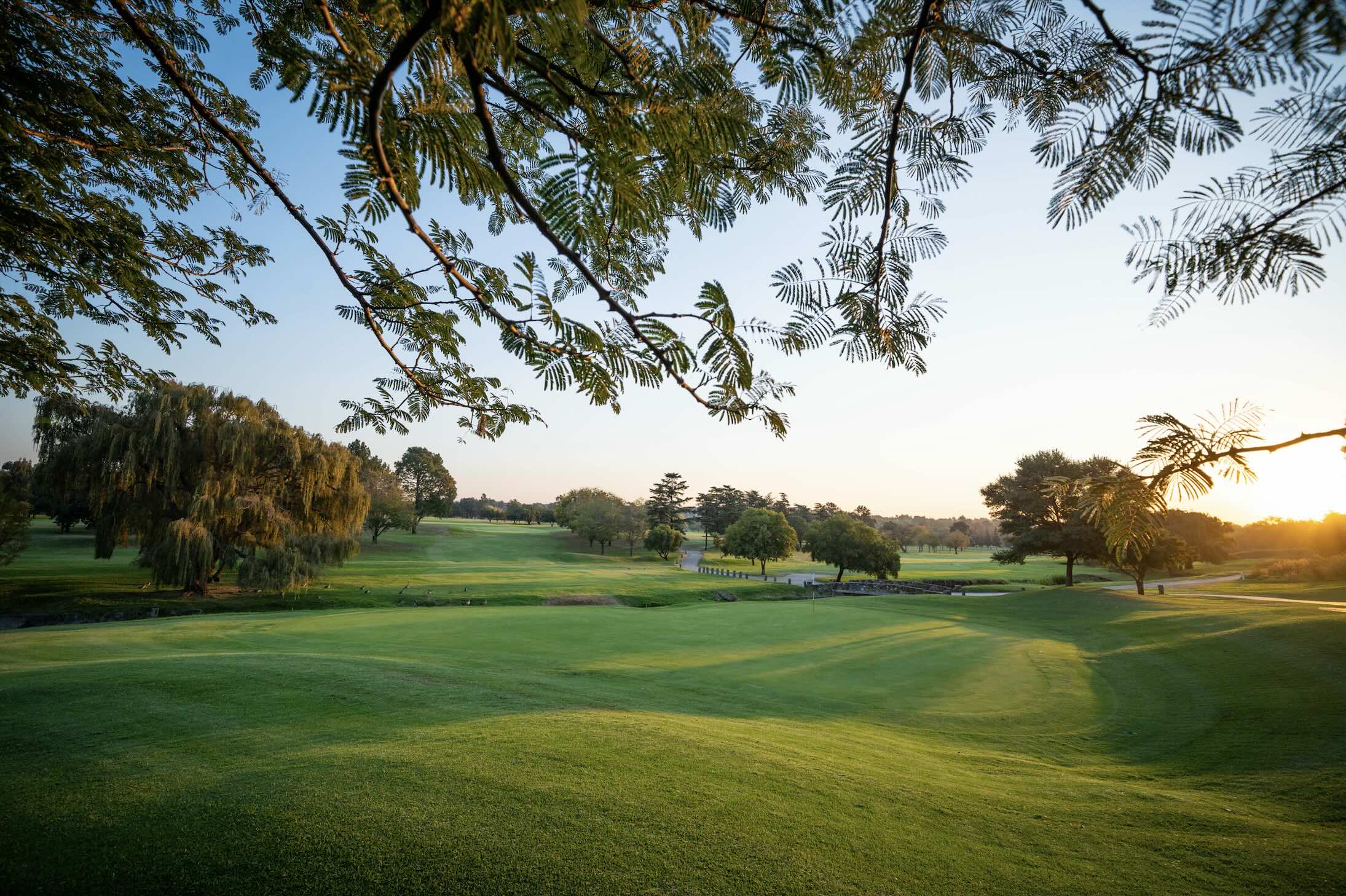
The closing hole is also a strong contender for signature hole. Water runs from the tee box along the right side of the fairway before cutting across the fairway in front of the green. As the hole slides from left to right, ideally you should try to favour the left side of the fairway. The approach shot needs to keep in mind water and two bunkers short of the green. On completion of the 18th, there is only one thing to do: head up to the bar to enjoy the club’s hospitality.
Ranked 49th in the country, Modderfontein ticks all the boxes. Easily accessible and centrally located in Gauteng, it should feature on any golf tour list. The large clubhouse is always a hub of activity and the sloping nature of the course keeps one true for yardage and club selection.
A course that continually delivers on playability and conditioning and in many ways is somewhat underrated.
SIGNATURE HOLE
15th hole, par four, 427m
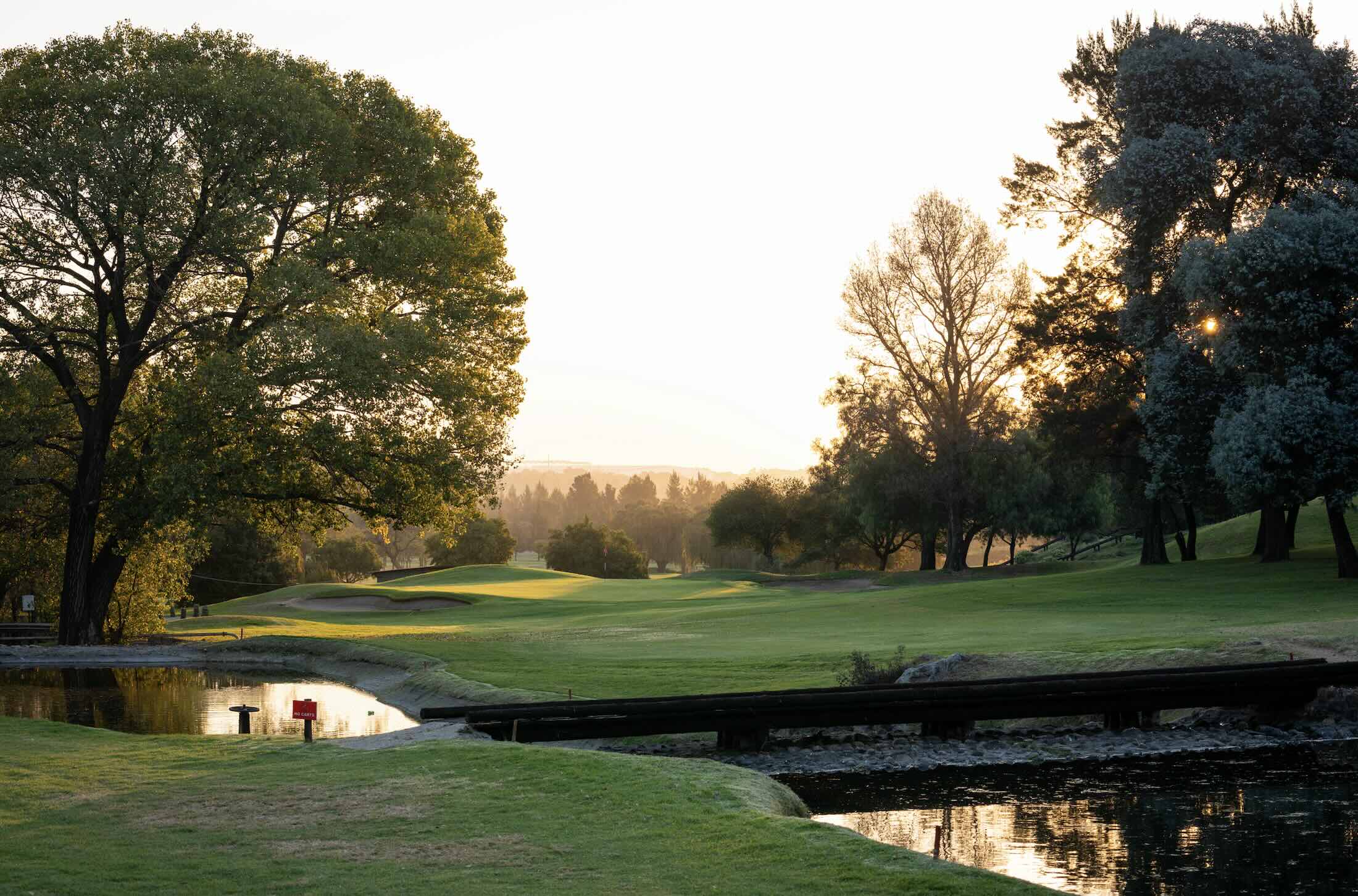
The downhill 15th is the signature hole, and while it is hotly contested by several other options, the stroke one holds the accolade of the hardest and prettiest hole on the course.
Spanning a length of 427m, it is a mere 29m shorter than two of the par fives on the course. A nerve-racking drive can be expected with water running down the entire right-hand side of the fairway.
As it is downhill you can expect a certain amount of run on the fairway, especially in the dry winter months.
From the fairway, anything from a 3-wood to a long-iron will be needed to reach the green in two. You will also need to favour the left side of the fairway to avoid the water as well as opening up the green due to the slight dogleg right.
Approximately 100m from the green, the water left makes its way obliquely across the fairway, so be sure to get the correct yardage in the event of laying up.
Greenside, one needs to avoid bunkers left and right of the relatively small green. There is a little space over the back for those wanting to avoid the bunkers.
For those not able to get up in two, the best advice is to play the hole as a par five, leaving yourself the correct distance from the hole for your favourite approach.
As the green, sloping from back to front, is not large, aim for the centre and make a solid two-putt for your two points. Trying to get too much out of this stroke one may well end up in disaster.
Be sure to take one final look as you depart the green, acknowledging both the beauty and clever design of this hole.
A perfect risk and reward par four.
GREENFEES
Members: R130 9 holes R245 18 holes
Scholars: R135 9 holes R255 18 holes
Affiliated Guests: R175 9 holes R455 18 holes (R340 week days, R455 weekends)
Visitors: R315 9 holes R625 18 holes
Golf Cart: R270 9 holes R530 18 holes
ADDRESS
1 Centenary Road corner of Antwerp Road, Modderfontein, Johannesburg.
ROAD DISTANCES
Cape Town 1 422km
Gqeberha 1,095km
Durban 574km
Bloemfontein 420km
CONTACT DETAILS
Email: [email protected]
Phone: (011) 608 2033
Website: www.modgolf.co.za
– This article first appeared in the August 2024 issue of Compleat Golfer magazine.
Photos: Mark Sampson


